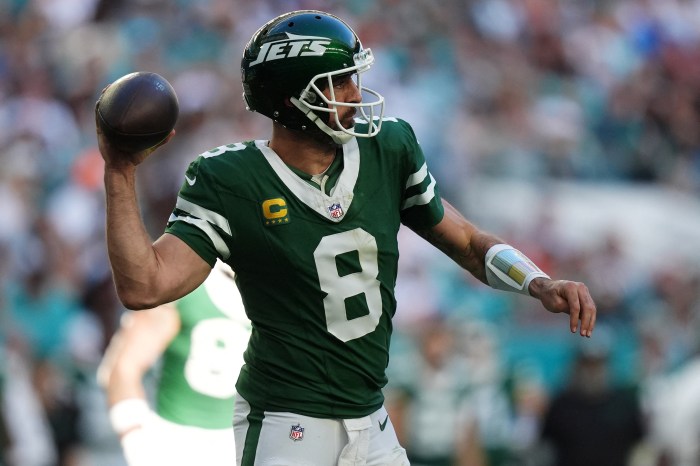Over the weekend, the New York Jets made a big splash by trading into the top three of next month’s NFL Draft. They’ll now draft one spot after the Giants, their MetLife Stadium roommates that currently hold the No. 2 overall selection.
Conventional wisdom indicates the Jets will take a quarterback in Round 1, a strategy which has yet to yield a franchise QB like the Giants have had with Eli Manning for more than a decade. The closest they’ve come since taking Hall of Famer Joe Namath in 1965 was Ken O’Brien, who played in two Pro Bowls for the Jets after going in the first round of the 1983 draft — but was taken three spots ahead of the great Dan Marino.
If either the Jets, Giants or both select a passer on April 26 — such as UCLA’s Josh Rosen, USC’s Sam Darnold or Wyoming’s Josh Allen — fans should be aware of the following trends that have developed among first-round quarterbacks over the last two decades.
High risk, high reward
Between 1998 and 2015, 22 QBs have gone in the top three of drafts. Of those, 10 have been selected to at least two Pro Bowls. While not perfect, a 45 percent chance of successfully adding a franchise quarterback is pretty good.
Unfortunately, completely whiffing on such picks is almost as likely. Nine of the 22 (41 percent) failed to earn a Pro Bowl spot, most notably busts JaMarcus Russell (No. 1 in 2007), Ryan Leaf (No. 2 in 1998) and Akili Smith (No. 3 in 1999).
Top three or bust
Recent history indicates the Jets’ major gamble — on Saturday, they gave the Indianapolis Colts three second-round picks over two drafts to move up three spots in the first round — could be more likely to net them a centerpiece passer than if they drafted a QB any later.
Only about 15 percent of first-round QBs taken fourth or later are two-time Pro Bowlers. The rate is virtually identical in Round 2, and drops to nine percent in Round 3. After that, it’s basically a crapshoot, with just three of 127 passers (2.3 percent) earning such accolades.
Money management
Mark Sanchez, who failed to pan out for the Jets after going No. 5 overall in 2009, made bank in one of the final years before the NFL instituted a rookie wage scale. His initial contract called for him to make more than $50 million over five years. According to Sportrac, he eventually made nearly $62 million with the team.
Now, rookie contracts are limited. First-rounders sign four-year deals — sometimes with team options — that aren’t nearly as lucrative. Sportrac lists the four-year value of the 2017 No. 2 pick, Bears quarterback Mitchell Trubisky — at about $29 million.
In other words, it will be easier and cheaper for the Jets to cut bait and move on if they fail to find a top-flight passer this year.



































